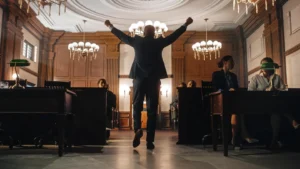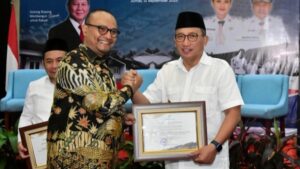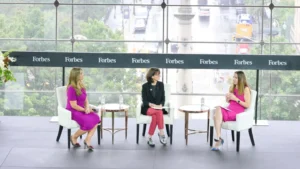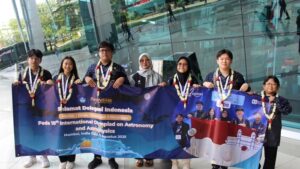New York — Elon Musk, the charismatic and visionary CEO of Tesla, unveiled two of his most ambitious projects yet on Thursday: the Cybercab and Robovan, vehicles designed to operate entirely without human drivers. In a lavish event in California, Musk laid out his vision for a world dominated by autonomous transportation, where the boundaries of human mobility are reshaped and self-driving cars roam the streets.
The Cybercab, Tesla’s first fully autonomous robotaxi, is designed to operate without the need for a steering wheel, pedals, or a driver at all. Alongside it, Musk introduced the Robovan, a larger vehicle aimed at group transportation or freight, expanding the possibilities of driverless technology beyond personal ridesharing. Musk’s vision is of an “age of abundance,” where these advanced technologies free up urban spaces, improve safety, and allow parking lots to be transformed into parks.
While the presentation was heavy on sleek, futuristic designs and optimism, questions linger about whether Tesla can deliver on these promises within the timeframes Musk has suggested. Production of the Cybercab is expected by 2026, but this ambitious deadline is not without precedent—Musk has a history of setting optimistic goals that often take longer to achieve.
Event Highlights: A Glimpse into a Sci-Fi Future
Musk’s event, held at the iconic Warner Bros. studios in California, was livestreamed to millions on X (formerly Twitter) and featured all the glitz and excitement Tesla fans have come to expect. The event showcased a number of models of the Cybercab and Robovan, with their sleek metallic surfaces and minimalist interiors evoking a sense of futuristic sophistication. Musk even referenced the famous sci-fi film Blade Runner during his presentation, though he was quick to note that his version of the future is far more hopeful and upbeat.
The Cybercab’s design is aimed at providing an unparalleled passenger experience. Instead of the traditional car layout, the vehicle resembles a mobile lounge, where passengers can relax and enjoy the ride without worrying about steering, braking, or accelerating. Musk promised that the Cybercab would not require plug-in charging, a major leap forward in electric vehicle technology. Instead, the car will charge by driving over specialized charging plates embedded in roads or parking areas.
In addition to the Cybercab, Musk also revealed the Robovan, a larger autonomous vehicle that can accommodate up to 20 passengers or cargo. The Robovan is designed for a wide range of uses, from group transportation to logistics, adding another layer to Tesla’s vision for a driverless future. However, no specific production timeline was provided for the Robovan.
The Roadblocks to Full Autonomy
Although Tesla’s Full Self-Driving (FSD) technology has made significant strides, it still has not achieved full autonomy. Currently available for $8,000 as an option on Tesla vehicles, FSD allows cars to navigate and drive on their own in many situations, but drivers are still required to remain behind the wheel, ready to intervene if needed. Despite Musk’s claims that FSD is already safer than human-driven cars, external testing tells a different story. A report from AMCI Testing revealed that Tesla’s FSD system requires driver intervention roughly every 13 miles.
Musk remains optimistic that Tesla will receive regulatory approval to operate fully autonomous vehicles in California and Texas by next year, but this prediction may prove challenging to meet. Experts believe that while Tesla’s technology is impressive, it is still far from the level of reliability needed for full autonomy.
Challenges and Musk’s Track Record
Musk is known for setting ambitious goals and timelines, but many of his past predictions about autonomous technology have proven overly optimistic. Five years ago, he predicted that Tesla’s fleet of robotaxis would be operational within a year, a target that has since passed. In his latest presentation, Musk admitted to being “a little optimistic” with his timelines, even referring to himself as “the boy who cried FSD” in acknowledgment of his previous delays.
Despite these setbacks, Musk’s ability to inspire confidence in his vision remains strong. The audience at the event, eager to experience the future of driving, cheered as they watched Tesla’s self-driving cars in action on the studio lot. Dozens of fully autonomous Teslas were available for demonstration rides, further amplifying the excitement surrounding the event.
Expert Opinions on Tesla’s Road Ahead
Analysts are divided on how soon Tesla can achieve full autonomy. Gene Munster, managing partner at Deepwater Asset Management, expressed skepticism that Tesla will reach full self-driving capabilities in the near future. “We’re seeing disengagements at 3% of miles driven,” Munster said, referring to instances where human drivers must take control. “To get to 99% or beyond, which is what regulators will likely require, is incredibly challenging.”
Munster believes that while Tesla may eventually succeed, it could take several years to achieve the necessary technological breakthroughs and regulatory approvals. “We’re still two years away from getting the technology right and likely another two to three years from full regulatory approval,” Munster explained.
Conclusion: A Daring Vision, But Challenges Remain
Elon Musk’s unveiling of the Cybercab and Robovan marks a pivotal moment in Tesla’s journey toward a fully autonomous future. With cutting-edge designs and technology that promises to redefine transportation, Tesla continues to lead the industry in innovation. However, the road to full autonomy remains fraught with challenges. While Musk’s vision is inspiring, only time will tell if Tesla can overcome the technological and regulatory hurdles necessary to bring driverless vehicles to the masses.










